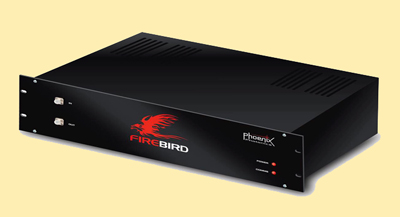12 Dec 2014
Researchers looking into future network technology space division multiplexing develop dedicated amplifier.
MODE-GAP, the European collaborative R&D project investigating space division multiplexing (SDM) to address the potential future capacity crunch within the telecommunications networks, has announced the launch of its latest product: a few-mode erbium-doped fiber amplifier (FM-EDFA). The product, developed for the transmission experiments for the project, is the first of its kind to be commercially available on the market following four years of focused R&D activity.Developed at the University of Southampton, the new FM-EDFA will be manufactured by Phoenix Photonics, based near Canterbury, UK. It is the first core-pumped amplifier to be made readily available to researchers investigating few-mode-fiber mode-division multiplexing (MDM) transmission and is available with compatibility with the OFS-designed 3- and 6-mode fibers. Earlier in 2014, the project demonstrated record long-haul reach using a full-mode fiber (FMF) technology transmission link, which was enabled through the use of the Southampton FM-EDFAs.
Project manager Dr. Ian Giles, said: “We are very excited to offer the first commercially available FM-EDFA that has been a key component in achieving the excellent transmission results within the project. Developing the amplifier to an integrated instrument has been very challenging and we are pleased to be able to offer 3-mode and 6-mode versions with high performance specification.

The FM-EDFA is the latest in a range of products that are now commercially available as a result of the project, including, few mode fiber from OFS Fitel, photonic lanterns and fibre mode converters from Phoenix Photonics and 2 micron lasers from Eblana Photonics.
About MODE-GAP
MODE-GAP is a key project seeking to provide Europe with a lead in the development of the next generation internet infrastructure to address the potential capacity crunch, as traffic on the world’s optical networks continues to increase dramatically. Originally due to be completed in September 2014, its running time has been extended to March 2015.
Combining the expertise of world-leading photonics partners, the project is developing transmission technologies based on specialist long-haul transmission fibers, and associated enabling technologies. These include novel rare-earth doped optical amplifiers, transmitter and receiver components and data processing techniques to increase the capacity of broadband networks.
The MODE-GAP project is supported within the European Commission’s 7th Framework Programme and has brought together leading European organisations to explore MDM as a potential telecommunications capacity enhancement solution.
Key organisations that have contributed to the MODE-GAP project include the University of Southampton’s Optoelectronics Research Centre, the University of Aston’s Institute of Photonic Technologies, ESPCI ParisTech, OFS Fitel Denmark APS, Phoenix Photonics, the COBRA Institute at Technische Universiteit Eindhoven, Eblana Photonics Ltd, Coriant R&D GmbH, Nokia Siemens Networks GMBH & Co. KG and the Tyndall National Institute of University College Cork.
About the Author
Matthew Peach is a contributing editor to optics.org.
| © 2026 SPIE Europe |
|